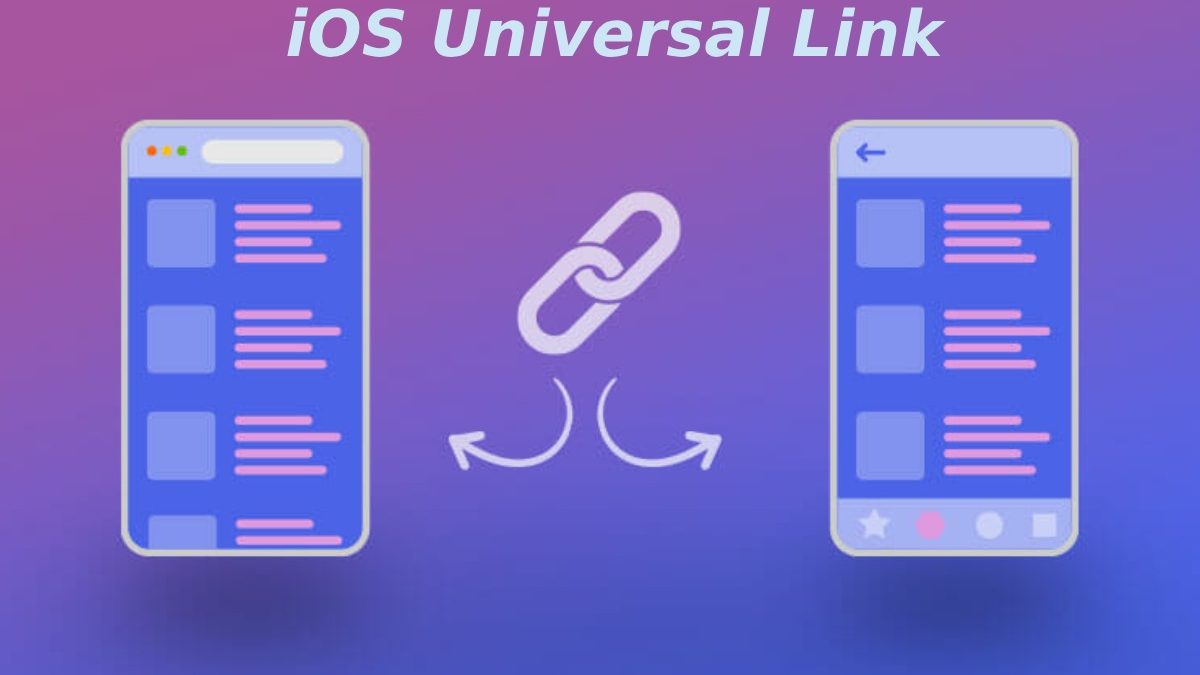iOS Universal Link – Universal link launched by Apple in 2015, led to revolutionizing the way marketers operate web links with native apps. It enables a harmonious relationship between a brand’s user interface and the customer experience. iOS universal links are designed to replace traditional URLs and have become the recommended method to connect apps with web experience. In this article, we will explore deeper into the understanding of Universal Links, their advantages, and functional strategies that help it become an integral part of a customer’s web-to-app experience.
Table of Contents
Definition Of Universal Links
Apple introduced the Universal Links feature in iOS 9. This feature enables users to be navigated from website links with the native app, if it is downloaded on their respective devices. For a user-friendly and seamless experience, the interface redirects the user from the website to the app, without any additional input from the user.
How Does Universal Linking Work?
Imagine you are using a mobile device to browse a website. The website links can directly lead you to the in-app product page for a seamless purchase. Universal linking helps to connect specific activities you can do on the app with the website. If you do not have the native app installed on your device, then the universal link either takes you to the App Store for the user to download the specific app, or automatically opens the app page of interest.
The setup of iOS Universal Links is simple, making it popular among app developers. The developers configure the app and website using Apple’s App Site Association (ASA) file. The ASA file hosted on the website server carries specified JavaScript Object Notion (JSON) codes which verify the URL to be opened by the native app.
Advantages Of Universal Links
- The user experience transitioning from website to mobile app generates a seamless process without hassle.
- If the interface of the site and app are the same, it improves consistency in the app experience.
- An increase in retention rates is noticed by streamlining the wants and needs of the user.
- Universal links are HTTP or HTTPS links that can easily be shared among different platforms. This encourages social media and word-of-mouth marketing.
- From the perspective of an app owner, it makes tracking the Lifetime Value (LTV) and ARPU (Average Revenue Per User) of a customer easier and more quantifiable.
- A user’s privacy is encrypted to a secure path eliminating the possibility of fraudulent applications.
Understanding Universal Links Vs App Links
Universal Links
- Introduced by Apple in 2015
- Only works on iOS environment (iPhones, iPads, Macbooks, iPods)
- Aim: Seamless transition of the user onto the native app or a new webpage (if the app is not installed.)
- Set-Up Process: Apple App Site Association or ASA file hosted on the website’s server
App Links
- Introduced by Google in 2015
- Only works on Android devices.
- Aim: Effective journey of the user from a website to an app, granted the app is installed on the user’s device.
- Set-Up Process: JavaScript Object Notion or JSON file hosted on the website’s server.
Strategies To Optimize User Experience With Universal Link
- It is necessary to remember that user misdirection is not appreciated. The user should be able to transition from the website link and view the same product in the app when they click on the link.
- Boosting similar products within the app helps users to specific features within the app creating personalized user experiences.
- In case the universal link fails to open the mobile app or crashes before it can, the universal link allows it to fall back to the app store, this feature benefits mobile-first advertisers.
- Keep in mind that the website and app should have a cohesive and easy-to-use layout to draw in the user to explore more within the app and not get confused.
- Sometimes poor internet connection or crash can fail to open the mobile app, generate an “ERROR” message or an alternative course of action
Common Troubleshooting Problems With Universal Linking
- Universal links have their own sets of security measures including ensuring the universal links are not redirecting from a different URL making the website and the mobile app difficult to use.
- iOS launches an update every year, so it is essential to ensure that the iOS version is compatible with universal links. This precaution helps to detect and limit bugs.
- Integration of ASA with the universal link is a must to successfully open an app from a webpage, if not done accurately then it may generate an error in opening the app.
- It is important to note that the universal links do not work when they are copy-pasted on your browsers.
- Universal linking can face configuration issues with deep linking when social media apps block the links that help the transition from a website to a mobile app.
In conclusion, if you understand the basis of deep linking, universal linking is a cake walk. It aims to improve the user experience by creating a cohesive journey for the user from the website to the desired mobile app.

